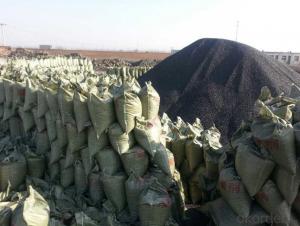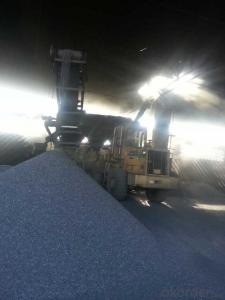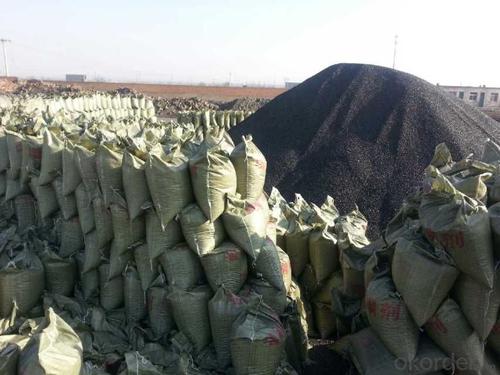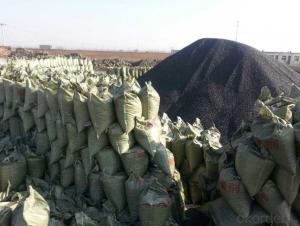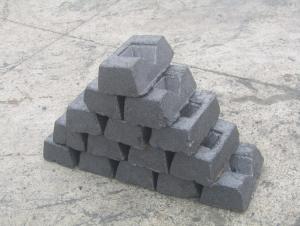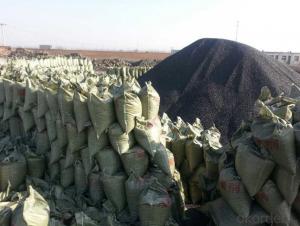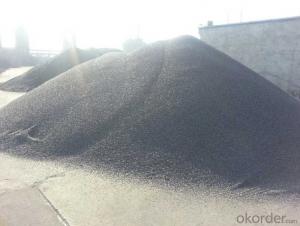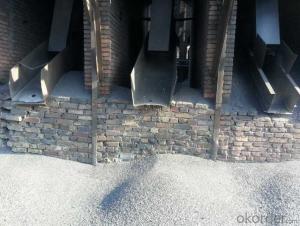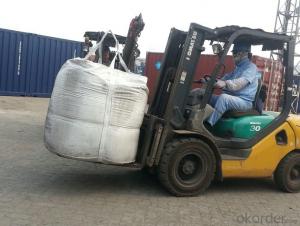Charge Coke FC85% min with stable quality
- Loading Port:
- Tianjin
- Payment Terms:
- TT OR LC
- Min Order Qty:
- 20 m.t.
- Supply Capability:
- 3000 m.t./month
OKorder Service Pledge
OKorder Financial Service
You Might Also Like
Packaging & Delivery
25kgs/50kgs/1ton per bag or as buyer's request
Specifications
Calcined Anthracite
Fixed carbon: 90%-95%
S: 0.5% max
Size: 0-3. 3-5.3-15 or as request
It used the high quality anthracite as raw materials through high temperature calcined at over 2000 by the DC electric calciner with results in eliminating the moisture and volatile matter from anthracite efficiently, improving the density and the electric conductivity and strengthening the mechanical strength and anti-oxidation. It has good characteristics with low ash, low resistvity, low sulphur, high carbon and high density. It is the best material for high quality carbon products.
Advantage and competitive of caclined anthracite:
1. strong supply capability
2. fast transportation
3. lower and reasonable price for your reference
4.low sulphur, low ash
5.fixed carbon:95% -90%
6..sulphur:lower than 0.3%
General Specification of Calcined Anthracite:
| FC | 80 | 83 | 85 | 88 | 90 |
| ASH | 16 | 14 | 13 | 10 | 8.5 |
| V.M. | 3 | 3 | 2 | 2 | 1.5 |
| S | 0.5 | 0.5 | 0.5 | 0.5 | 0.35 |
| MOISTURE | 2 | 2 | 1 | 1 | 0.5 |
Pictures
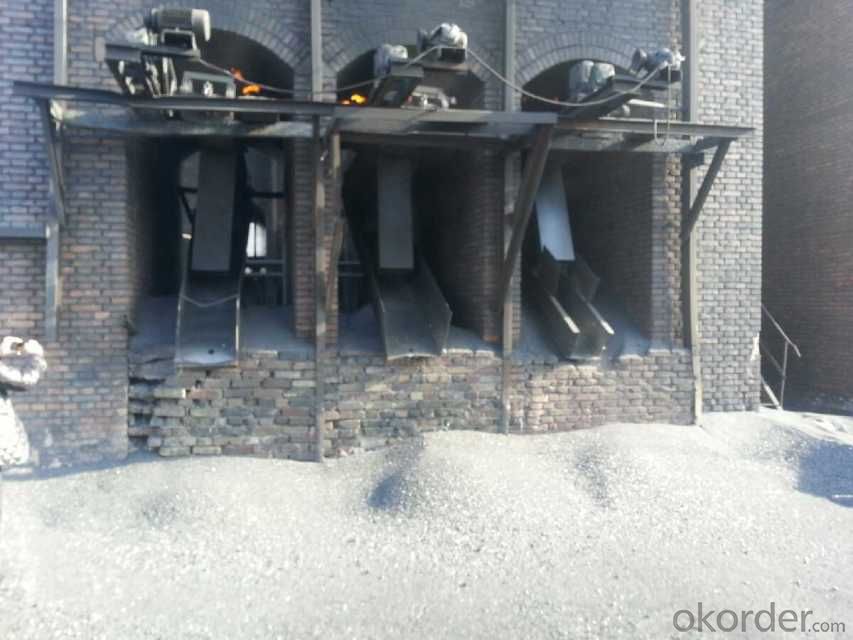
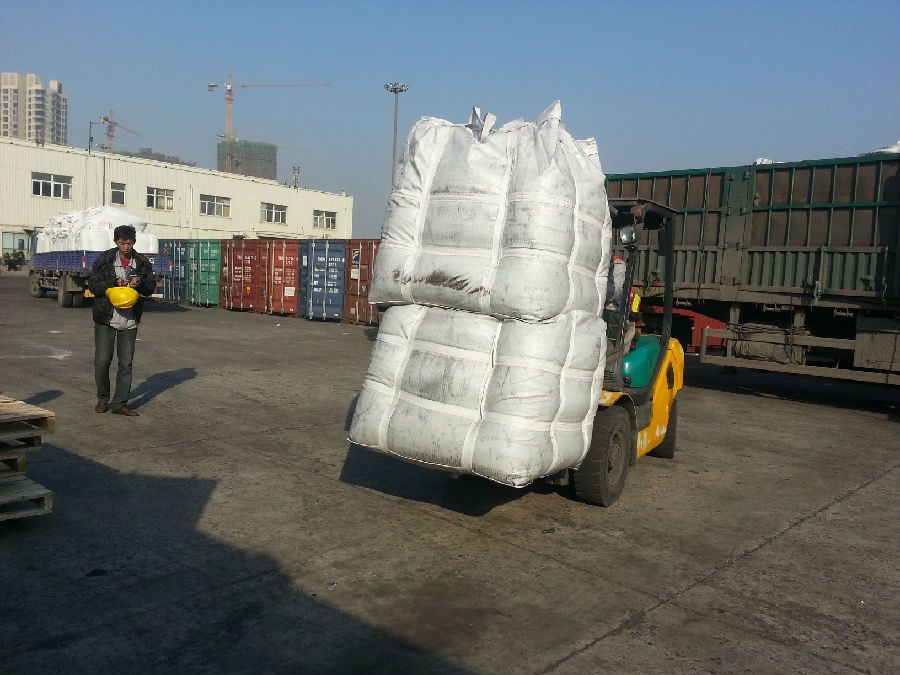
We are also strong at below materials, please contact us if you are interested in any of them:
Calcined Petroleum Coke
Carbon Electrode Paste
Carbon Electrode
- Q: What materials can be carbonitriding?
- Low temperature carbonitriding for high alloy tool steel, high-speed steel tools, etc., in temperature carbonitriding is under great pressure not only in carbon steel wear parts, high temperature carbonitriding is mainly used for medium carbon steel and alloy steel under great pressure.
- Q: What are the benefits of carbon-neutral technologies?
- Carbon-neutral technologies have numerous benefits that make them a vital solution in combating climate change and creating a sustainable future. Firstly, these technologies help to reduce greenhouse gas emissions, particularly carbon dioxide, which is the primary contributor to global warming. By transitioning to carbon-neutral technologies, we can significantly decrease our carbon footprint and mitigate the harmful effects of climate change. Secondly, carbon-neutral technologies promote energy efficiency and resource conservation. Many of these technologies, such as renewable energy sources like solar and wind power, harness natural resources that are infinite and readily available. This reduces our reliance on finite fossil fuels, which not only helps to protect the environment but also reduces the volatility of energy prices. Furthermore, embracing carbon-neutral technologies can lead to improved air quality and public health. Traditional energy sources like coal and oil contribute to air pollution and have detrimental health effects on humans, such as respiratory issues and cardiovascular diseases. By transitioning to cleaner technologies, we can reduce air pollution and improve the quality of life for individuals and communities. In addition, carbon-neutral technologies can stimulate economic growth and create new job opportunities. The development, installation, and maintenance of renewable energy infrastructure require skilled workers, leading to job creation and economic development. This transition can also reduce dependency on imported energy sources, leading to greater energy independence and national security. Lastly, by adopting carbon-neutral technologies, we can demonstrate global leadership and contribute to international efforts to combat climate change. Countries that embrace these technologies become role models for others and encourage global cooperation in reducing greenhouse gas emissions. In conclusion, the benefits of carbon-neutral technologies are vast and multidimensional. They not only help mitigate climate change and reduce greenhouse gas emissions but also promote energy efficiency, improve air quality, stimulate economic growth, and contribute to global efforts in creating a sustainable future.
- Q: What are the impacts of carbon emissions on biodiversity?
- Carbon emissions have significant impacts on biodiversity. Increased levels of carbon dioxide in the atmosphere contribute to climate change, which disrupts ecosystems and threatens biodiversity. Rising temperatures, altered precipitation patterns, and more frequent extreme weather events can lead to habitat loss, shifts in species distribution, and reduced reproductive success. Moreover, ocean acidification resulting from carbon emissions poses a threat to marine ecosystems, affecting coral reefs and other vulnerable species. Overall, carbon emissions have detrimental effects on biodiversity, potentially leading to the extinction of numerous species and the destabilization of ecosystems.
- Q: Does anyone know what the definition of carbon storage is in ecology? Thank you
- It's not 12g's problem, it's carbon selection.If oxygen is selected, it is not 12g, but it must be 16g.So why choose carbon atoms instead of other atoms?(Note: this carbon atom must have 6 protons and 6 neutrons. The following is called C-12. Of course, there are 6 protons and 7 neutrons, or 8 neutrons carbon atoms, but can not be usedI refer to other information stored on the computer, but I can't remember the source.The reason why C-12 is used as the relative atomic mass standards are as follows: (1) the formation of many high quality carbon molecular ion and hydride, for mass spectrometry; (2) 12C is easily measured in a mass spectrometer, using mass spectrometer to determine the relative atomic mass is the most accurate method of modern (3); after using C-12, the relative atomic mass of all elements have little change, only 0.0043% less than in the past; (4) the carbon atom is stable in natural abundance; (5) the carbon in nature is widely distributed and its compounds especially organic compounds is various; (6) the minimum density of hydrogen is relative atomic mass not less than 1.The absolute mass of an atom is very small, and if expressed in kilograms, it is very inconvenient. Thus, 1/12, the quality of such a carbon atom, is used as a standard, and the mass of other atoms is the relative atomic mass of this atom
- Q: What is carbon nanocomposite coating?
- Carbon nanocomposite coatings, composed of carbon nanotubes or other carbon-based nanoparticles dispersed within a matrix material like polymer or metal, serve as a protective coating for diverse surfaces. The primary goal of these coatings is to enhance the mechanical, thermal, and electrical properties of the material being coated. By incorporating carbon nanoparticles, the coating gains strength, hardness, and wear resistance, resulting in increased durability. Furthermore, it exhibits exceptional resistance to corrosion, making it suitable for use in severe environments. A key advantage of carbon nanocomposite coatings lies in their ability to offer multifunctional properties. For instance, they can be engineered to possess high electrical conductivity, making them ideal for electronics and electrochemical devices. Additionally, they can exhibit high thermal conductivity, making them valuable for dissipating heat in electronic devices or as a thermal barrier coating. Moreover, carbon nanocomposite coatings have demonstrated promising outcomes in various sectors such as aerospace, automotive, energy, and healthcare. In aerospace, they enhance the performance and longevity of aircraft components. In the automotive industry, they provide anti-scratch and self-cleaning capabilities. In energy applications, they improve solar panel efficiency and protect oil and gas pipelines from corrosion. In healthcare, they enable drug delivery, act as antibacterial coatings, and facilitate bio-sensing applications. In summary, carbon nanocomposite coatings offer a wide array of advantages, including enhanced mechanical and electrical properties, corrosion resistance, and multifunctionality. With continuous research and development, these coatings hold immense potential for different industries, providing innovative solutions to address their unique requirements and challenges.
- Q: What is carbon sequestration?
- The process of carbon sequestration involves capturing carbon dioxide (CO2) from the atmosphere and storing it for a long time, preventing its release and its contribution to climate change. The objective is to decrease the concentration of CO2 in the atmosphere, as this gas is a major cause of global warming. Carbon sequestration can happen naturally through biological processes like photosynthesis in plants and algae, or it can be done through various artificial methods. When plants, trees, and other vegetation absorb CO2 during photosynthesis and store it in their tissues, it is known as natural carbon sequestration. This is crucial in reducing CO2 levels in the atmosphere. Additionally, oceans also play a significant role in absorbing and storing large amounts of CO2, known as oceanic sequestration. Artificial carbon sequestration techniques involve capturing CO2 emissions from industrial processes, power plants, and other sources before they are released into the atmosphere. There are different methods for carbon capture, including capturing before combustion, after combustion, and through oxy-fuel combustion. Once the CO2 is captured, it can be transported and stored underground in geological formations like depleted oil and gas fields or saline aquifers. This process is commonly referred to as carbon capture and storage (CCS) or carbon capture utilization and storage (CCUS). Carbon sequestration has gained significant attention because of its potential to address climate change. By reducing the amount of CO2 in the atmosphere, it helps slow down global warming and mitigate the impacts of climate change. It is considered an essential part of the broader strategy to achieve net-zero emissions, as it not only reduces future emissions but also removes CO2 that has already been emitted. However, carbon sequestration is not a complete solution to climate change. It should be seen as a complementary approach to other mitigation efforts, such as transitioning to renewable energy sources and improving energy efficiency. Additionally, the long-term storage of CO2 requires careful monitoring and management to ensure its effectiveness and prevent any leakage or environmental risks. In conclusion, carbon sequestration is a crucial tool in the fight against climate change, offering the potential to reduce greenhouse gas emissions and contribute to a more sustainable future.
- Q: What is the burning point of carbon?
- Generally speaking, the ignition point of charcoal is relatively low, about 300 degrees, and the coal is higher, at 600 - 700 degrees!
- Q: How does carbon dioxide affect the Earth's atmosphere?
- Carbon dioxide affects the Earth's atmosphere by trapping heat from the sun, leading to the greenhouse effect and causing global warming and climate change.
- Q: What is carbon dating?
- Carbon dating is a scientific method used to determine the age of ancient artifacts or fossils by measuring the amount of carbon-14 remaining in them.
- Q: other parameters are figured out, the difference is only in the carbon and carbon is not very clear, just know that they are winding mode is the opposite, there are two kinds of most printers can be used, what is the difference between the performance of them? Two can use the printer in the selection of the best carbon or carbon? Why? Please cite several models as an example.Please answer in your own words. Don't factor,
- In fact, to teach you a simple way to distinguish between internal and external carbon, carbon, label paper dip ribbon, with black on the outside of the outer side is carbon, carbon is in inside, no performance difference, now generally used is the most carbon, such as the machine is to use carbon is better, because the wound is not the same, sometimes loose.SATO machine with carbon is better, and the CITIZEN printer inside and outside carbon can be used, in addition to machine limitations, not what the difference is too big, the quality of internal and external carbon ribbon is the same.
Send your message to us
Charge Coke FC85% min with stable quality
- Loading Port:
- Tianjin
- Payment Terms:
- TT OR LC
- Min Order Qty:
- 20 m.t.
- Supply Capability:
- 3000 m.t./month
OKorder Service Pledge
OKorder Financial Service
Similar products
Hot products
Hot Searches
